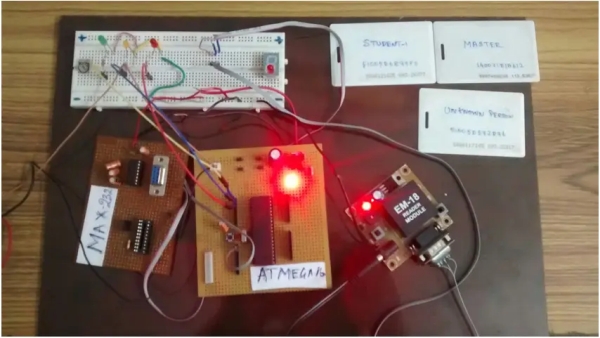Here are some potential issues or limitations with the proposed RFID-based access control system design:
Privacy/Data Security – Stored RFID tag IDs could potentially be hacked or leaked, exposing user privacy. Proper encryption and access controls would be needed.
RF Interference – The RFID reader’s performance could be impacted by other electromagnetic devices/signals in the environment. Shielding may be required.
Tag Cloning – While difficult, it’s theoretically possible to clone RFID tags, undermining security. Additional authentication factors could help.
Limited Range – The reading range of typical low-cost RFID readers may not cover large areas, requiring multiple readers for big spaces.
Initial Setup Cost – Hardware, development and deployment costs could be high for complex installations with many access points.
Unauthorized Access – If a valid tag is stolen/lost, there is a window of vulnerability until it can be deactivated in the system.
Single Point of Failure – A bug or hardware fault in the microcontroller could potentially compromise the whole system.
Battery/Power Dependence – Battery-powered systems may require frequent replacement, increasing maintenance costs over time.
No Tamper Detection – The design currently lacks features to detect physical tampering with locks/sensors that could bypass the RFID system.
Overall it’s a good basic design but would need to address such limitations through improved security methods, redundant components, ongoing maintenance plans etc. for robust real-world deployments.
Privacy/Data Security:
Store encrypted tag IDs and authentication credentials instead of plain texts.
Implement access control and auditing of system operations.
Consider hashing or one-way encryption of tag IDs rather than full decryption.
RF Interference:
Use a high-quality shielded reader.
Experiment with different antenna types/orientations.
Try modulating tags/reader to avoid interference frequencies.
Tag Cloning:
Add rolling authentication codes that change periodically.
Implement kill commands to disable cloned tags.
Integrate additional authentication like biometrics if needed.
Range:
Use high power long range readers where possible.
Strategically place additional readers for coverage.
Consider alternate technologies like BLE beacons for bigger spaces.
Cost:
Modular design allows scaling costs. Start simple, expand features over time.
Optimize hardware choices – balance functionality vs lower costs.
Consider ongoing cloud/SaaS model versus one-time purchases.
Single point of failure:
Use redundancy – dual microcontrollers, backup power, offsite monitoring.
Design for easy replacement of faulty components.
Implement version control and remote updates.
Tamper detection:
Add sensors on locks, doors, wiring to detect physical intrusion attempts.
Integrate with security camera surveillance for monitoring.
Log and alert on any unauthorized state changes.
Follow this link for complete project: RFID-Based Security System with AVR ATmega32 Microcontroller

